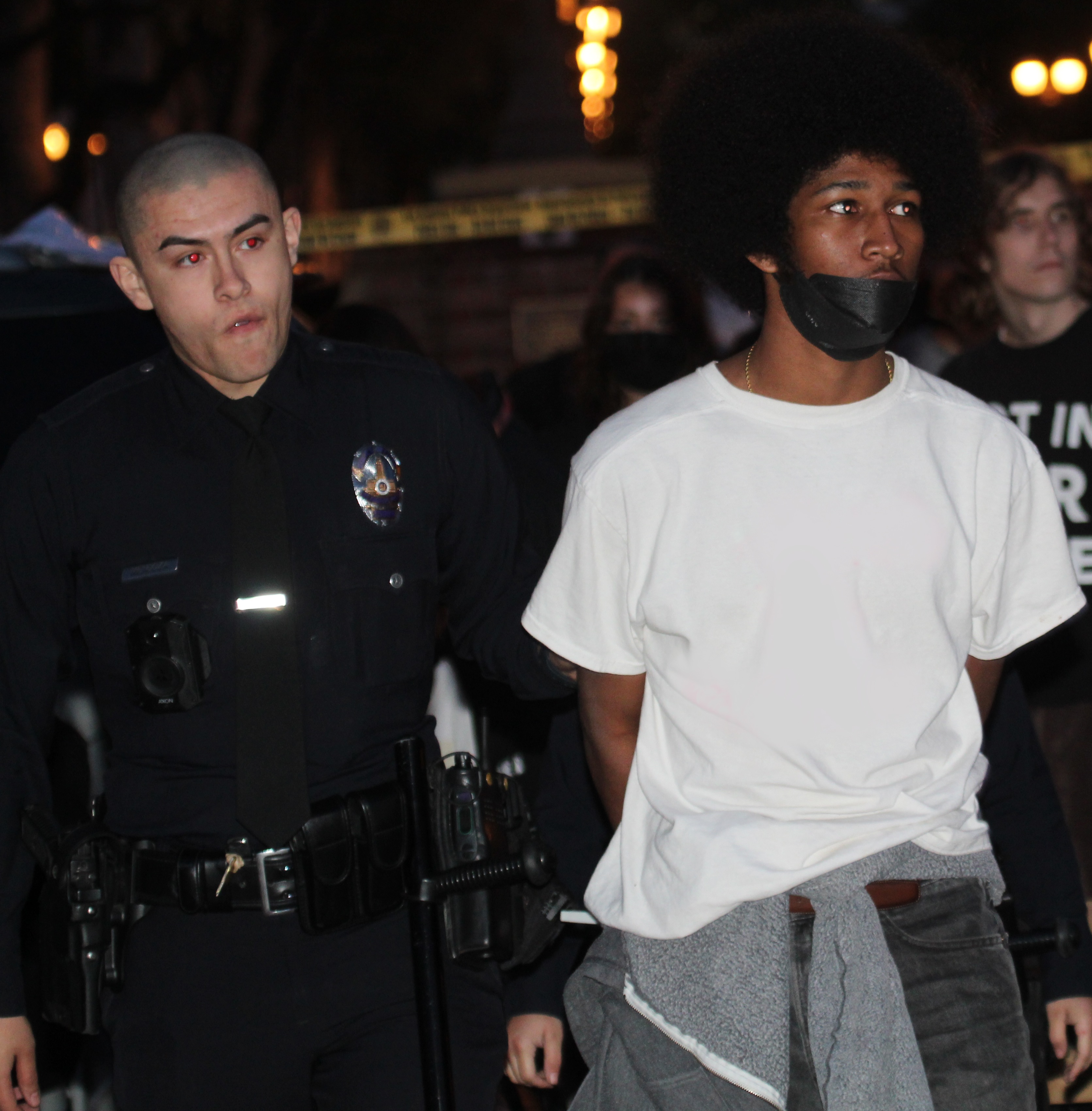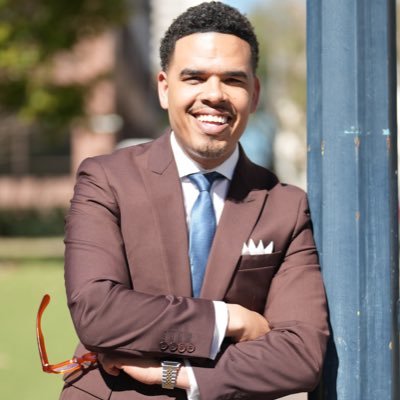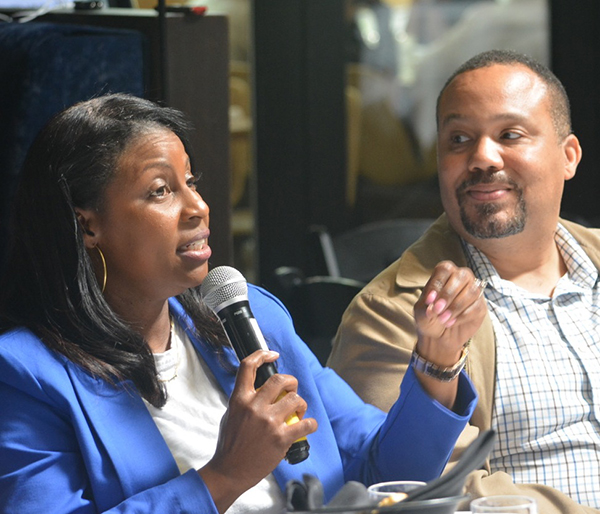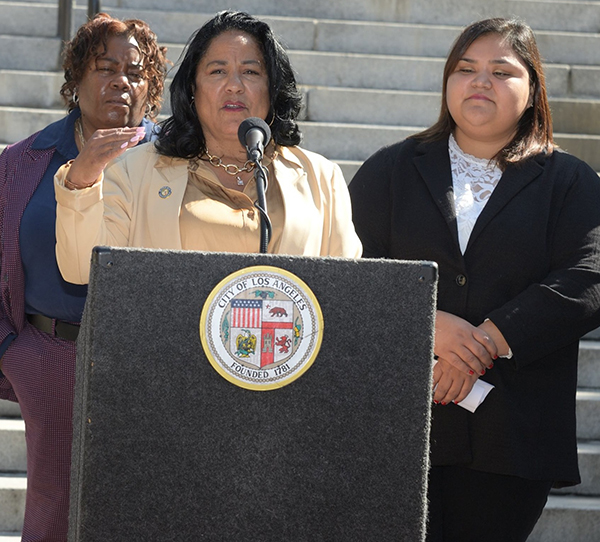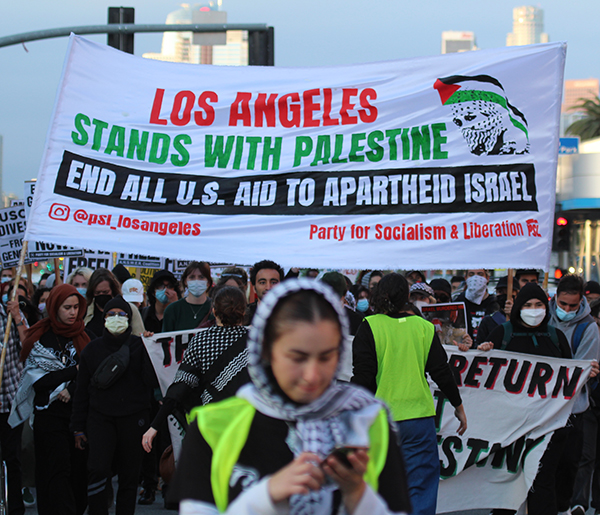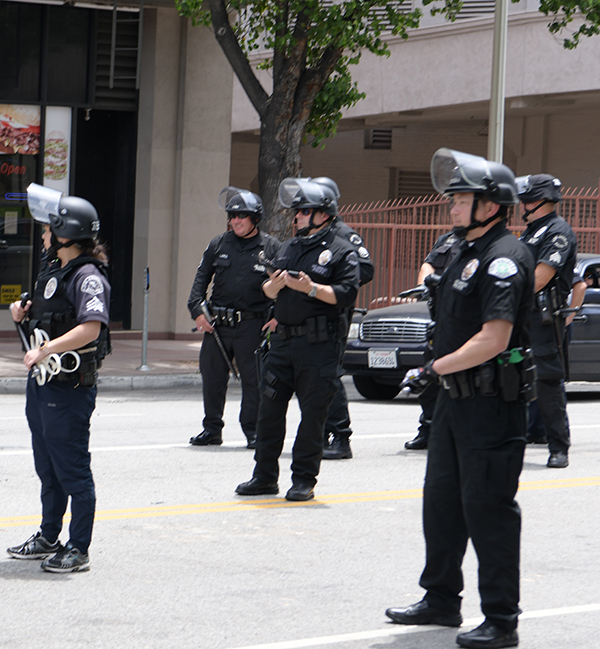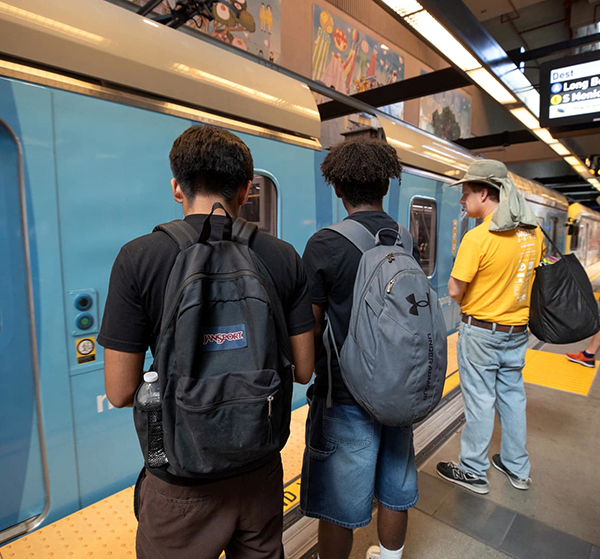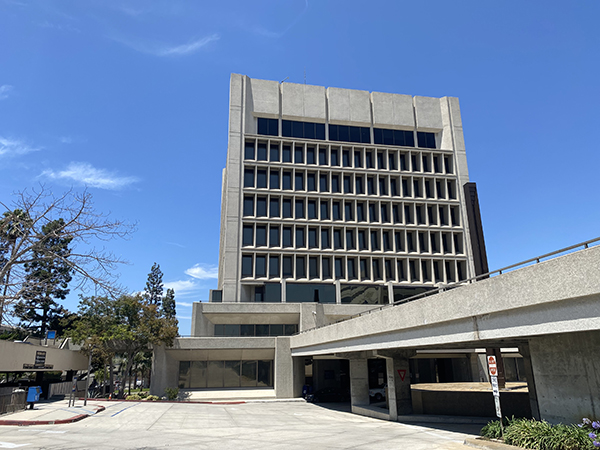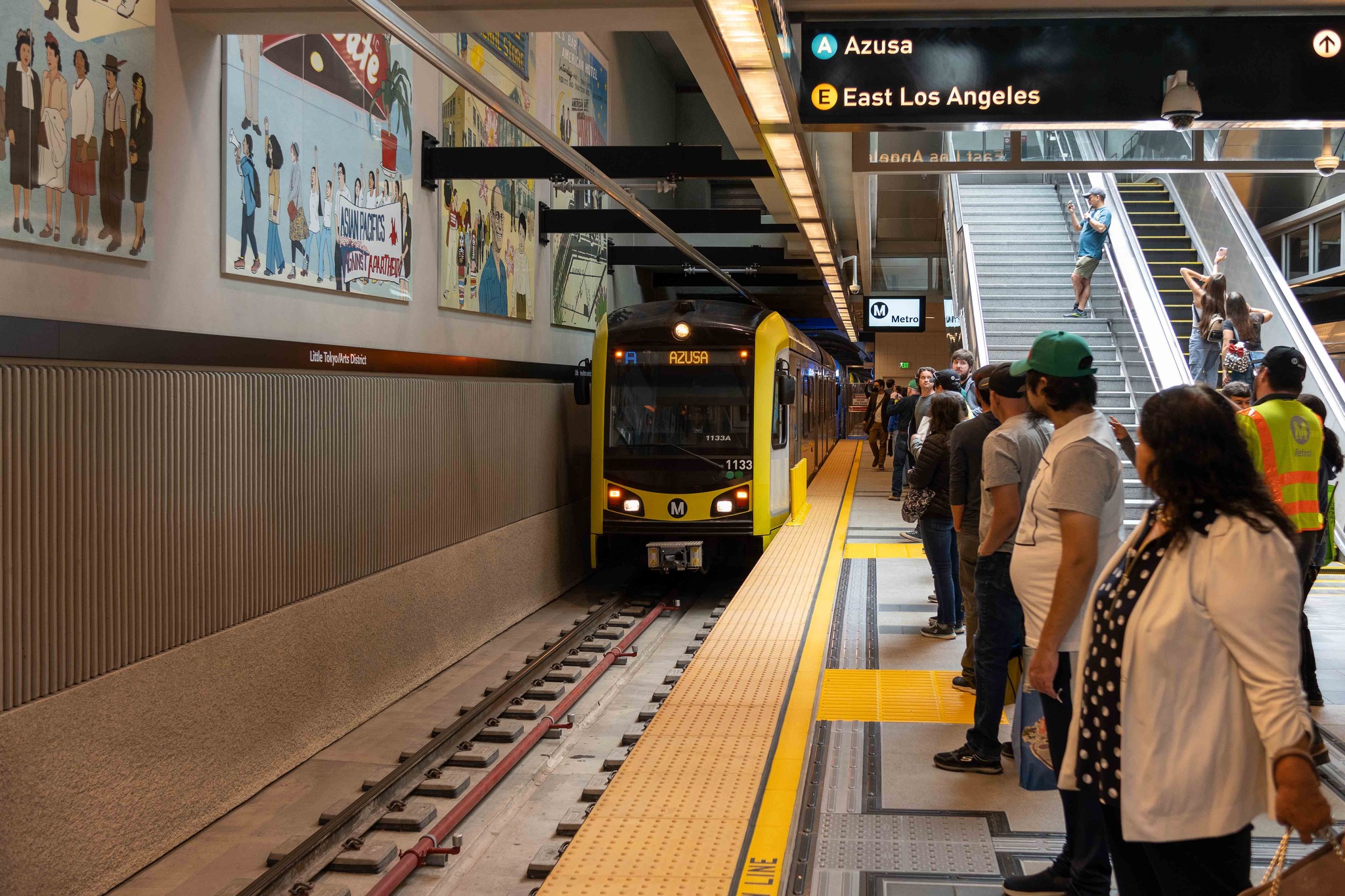Wave Staff and Wire Reports
LOS ANGELES — The Los Angeles County transportation system got a major facelift June 16 with the opening of the $1.8 billion Regional Connector project, which adds three underground stations in the downtown area and allows riders to travel between Azusa and Long Beach, and between East L.A. and Santa Monica, without transferring.
The long-awaited upgrade eliminates the train-hopping previously required of riders who had to disembark inbound E (Expo) and A (Blue) line trains at the Seventh Street/Metro Center Station, then board a subway train to reach Union Station, where they could then board an L (Gold) Line train to travel on to East Los Angeles or Azusa.
To make the transfer-free rides possible, three new underground stations opened — the Little Tokyo/Arts District Station; Historic Broadway Station; and the Grand Avenue Arts/Bunker Hill Station.
Those stations allow A (Blue) Line and E (Expo) Lines trains to continue beyond their previous terminus at 7th Street/Metro Center Station and through the downtown area to Union Station and beyond.
With the opening, there is no longer an L (Gold) Line in the system. That line’s stretch from Union Station to Azusa is now part of the A (Blue) Line, while the portion from Union Station to East Los Angeles was added to the E (Expo) Line.
Glendale City Councilman Ara Najarian, chair of the Metropolitan Transportation Authority Board of Directors, said the agency anticipates 90,000 daily passenger trips along the new two-mile rail segment, including “17,000 new transit riders.”
“With the Regional Connector’s opening, more people and communities across the region will have a faster, easier ride, all while we continue … to make the experience safer, cleaner and more welcoming for today’s and future riders, said L.A. Mayor Karen Bass, who serves on the MTA Board. “I know that so many people have worked hard to bring the Regional Connector online, and I intend to build on those efforts alongside my colleagues … to make sure that our transit network is a world-class system that works for everyone.”
The history of the Regional Connector dates back to the 1990s, when the original L Line was being planned, since the idea was for it to begin at Seventh/Metro and be a continuation of the A Line. At the time, that plan turned out to be infeasible due to funding issues, so the L Line’s first segment was instead built from Union Station to Pasadena.
In 2008, the MTA Board of Directors included initial funding for the Regional Connector in the Measure R sales tax ballot measure, which was approved by L.A. County voters. The project also was funded by approximately $1 billion in federal grants and loans, as well as bonds from the state’s high-speed rail project.
The project was originally envisioned as a street-level rail line but was moved underground by demand to ensure trains were faster, with less disruption to regular traffic. The project broke ground in October 2014.
According to the MTA, its staff had to plan and create an entirely new subway under the existing streets and buildings of downtown L.A. — which involved moving utilities and shoring up other existing infrastructure.
“This project exceeded our goals to employ a diverse construction workforce, especially from economically disadvantaged backgrounds,” county Supervisor and MTA board member Hilda Solis said. “To build an underground tunnel in an urban neighborhood and navigate a maze of existing infrastructure, as you know, is not an easy feat.”
“With this new system integration and three newly adorned stations, Angelenos have new high-quality transit options to get to civic spaces, cultural destinations, public parks, events, and neighborhoods throughout L.A. County,” Solis added. “Our returning and new riders will have easier access to medical facilities, job, and retail centers throughout Los Angles without the burdens of traffic delays, parking, and fueling costs.”
The opening ceremony at the Japanese American National Museum included the unveiling of a plaque that will be installed at the Little Tokyo/Arts District Station in honor of former Secretary of Transportation Norm Mineta, who oversaw the creation of the Transportation Security Administration in response to the Sept. 11, 2001, terrorist attacks that had occurred early in his tenure.
“What better way to celebrate the opening than with the unveiling of a plaque dedicated to Norman Y. Mineta, a national treasure and someone whose many worthy accomplishments played a crucial role in the transportation industry,” Nazarian said. “Mineta’s legacy will continue to live on for those who pass through the Little Tokyo/Arts District Station.”
County Supervisor Janice Hahn said the regional connector would transform how people across the county get to jobs, schools, the doctor, or even just a day at the museum.
“For the first time since the Blue Line opened over 30 years ago, it will now provide a seamless, single-seat connection from Downtown Long Beach to Union Station, Pasadena, and beyond,” she added.

